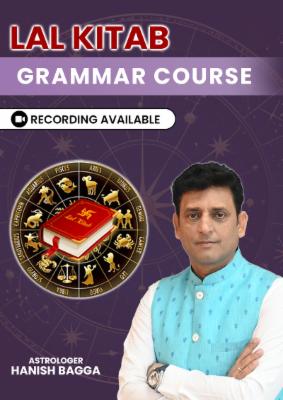Introduction to Baglamukhi Mantra
In the vast tapestry of Hindu spirituality, the Baglamukhi mantra holds a special place. This powerful invocation is dedicated to Goddess Baglamukhi, one of the ten Mahavidyas in Hinduism. Known for her ability to paralyze enemies and stop negative forces in their tracks, Baglamukhi is often sought after by devotees looking to overcome obstacles and achieve success. In this blog post, we’ll explore the depths of the Baglamukhi mantra, its significance, and how it can be incorporated into your spiritual practice.
Understanding Goddess Baglamukhi
The Divine Protector
Goddess Baglamukhi, also known as Pitambara Devi, is a powerful deity in the Hindu pantheon. Her name “Baglamukhi” is derived from two words: “Bagla,” meaning bridle, and “mukhi,” meaning face. This name symbolizes her ability to control and restrain negative forces.
Symbolism and Appearance
Baglamukhi is typically depicted with a golden complexion, wearing yellow garments. She is often shown holding a club in her right hand, with which she strikes demons, and pulling the tongue of a demon with her left hand. This imagery represents her power to silence malicious speech and deceit.
The Baglamukhi Mantra: A Closer Look
The Main Mantra
The primary Baglamukhi mantra is:
“Om Hleem Baglamukhi Sarvadushtanam Vācham Mukham Padam Stambhaya Jihvam Keelaaya Buddhim Vinaashaya Hleem Om Swaha”
This powerful invocation is believed to invoke the goddess’s protection and blessings.
Breaking Down the Mantra
Let’s examine the components of this mantra:
- “Om” – The primordial sound of the universe
- “Hleem” – The beej (seed) mantra of Goddess Baglamukhi
- “Baglamukhi” – Invoking the goddess by her name
- “Sarvadushtanam” – Meaning “of all the wicked”
- “Vācham” – Speech
- “Mukham” – Face or mouth
- “Padam” – Feet
- “Stambhaya” – To paralyze or freeze
- “Jihvam” – Tongue
- “Keelaaya” – To pin down
- “Buddhim” – Intelligence
- “Vinaashaya” – To destroy
- “Swaha” – An exclamation used at the end of mantras, signifying the offering to the divine
The Power and Benefits of Chanting the Baglamukhi Mantra
Overcoming Obstacles
One of the primary benefits associated with the Baglamukhi mantra is its ability to help devotees overcome obstacles. Whether these are personal, professional, or spiritual hurdles, regular chanting of this mantra is believed to provide the strength and divine assistance needed to surmount them.
Protection from Negative Energies
Goddess Baglamukhi is known as a protector against evil forces. By invoking her through the mantra, devotees seek her shield against negative energies, black magic, and harmful intentions from others.
Enhancing Personal Power
Regular recitation of the Baglamukhi mantra is said to enhance one’s power and confidence. It’s believed to instill courage and the ability to face challenges head-on.
Improving Communication Skills
Given Baglamukhi’s association with speech and the power of words, her mantra is often chanted to improve one’s communication skills. It’s particularly beneficial for those in professions that require persuasive speaking or writing.
How to Chant the Baglamukhi Mantra
Preparation
Before beginning the chanting practice, it’s important to create a conducive environment. Find a quiet, clean space where you won’t be disturbed. You may choose to set up a small altar with a picture or idol of Goddess Baglamukhi, along with yellow flowers and a yellow cloth, as yellow is her favored color.
Timing
The most auspicious time to chant the Baglamukhi mantra is believed to be during the “Brahma Muhurta,” which is about 1.5 hours before sunrise. However, consistency is more important than timing, so choose a time that you can stick to regularly.
The Chanting Process
- Begin by sitting in a comfortable position, preferably facing east.
- Take a few deep breaths to center yourself.
- Start with Om three times to attune yourself to the divine vibrations.
- Recite the full Baglamukhi mantra 108 times, using a mala (prayer beads) to keep count if you wish.
- End your session with a few moments of silent meditation, allowing the energy of the mantra to settle within you.
Frequency and Duration
For best results, it’s recommended to chant the mantra daily for at least 40 days. This creates a consistent practice and allows the energy of the mantra to build up over time.
Incorporating the Baglamukhi Mantra into Daily Life
Mindful Recitation
While it’s beneficial to have a dedicated chanting practice, you can also incorporate the mantra into your daily life. You might recite it silently while commuting, doing household chores, or during moments of stress or challenge.
Visualization
As you chant, try to visualize Goddess Baglamukhi. Imagine her golden form, radiating power and protection. This visualization can enhance the effectiveness of your practice and deepen your connection to the divine energy.
Combining with Other Practices
The Baglamukhi mantra can be combined with other spiritual practices for a more holistic approach. For example, you might incorporate it into your yoga or meditation routine, or use it alongside other mantras dedicated to different aspects of the divine.
Common Misconceptions about the Baglamukhi Mantra
It’s Only for Negative Purposes
While the Baglamukhi mantra is often associated with overcoming enemies or negative forces, it’s important to understand that its true purpose is protection and transformation. It’s not about harming others, but about neutralizing negative influences and fostering personal growth.
Instant Results
Like any spiritual practice, the effects of chanting the Baglamukhi mantra may not be immediately apparent. It requires patience, dedication, and sincere practice to experience its benefits fully.
It’s Only for Advanced Practitioners
While some mantras do require initiation from a guru, the Baglamukhi mantra can be chanted by anyone with sincere devotion. However, guidance from a knowledgeable teacher can certainly enhance your practice.
Conclusion
The Baglamukhi mantras are a powerful tool for spiritual growth, protection, and personal empowerment. By understanding its significance, learning the correct method of chanting, and incorporating it into your daily life with sincerity and devotion, you can tap into the transformative energy of Goddess Baglamukhi.
Remember, like any spiritual practice, the key to experiencing the benefits of the Baglamukhi mantra lies in consistency and sincere devotion. Whether you’re seeking protection, looking to overcome obstacles, or simply deepening your spiritual practice, the Baglamukhi mantra offers a profound pathway to divine connection.
As you embark on this spiritual journey with the Baglamukhi mantra, remain open to the subtle shifts and transformations that may occur in your life. Trust in the process, and allow the divine energy of Goddess Baglamukhi to guide and protect you on your path.
For interesting astrology-related videos, subscribe to us on Youtube
FAQs About the Baglamukhi Mantra
Q1: Can anyone chant the Baglamukhi mantra?
Yes, the Baglamukhi mantra can be chanted by anyone with sincere devotion. However, it’s always beneficial to seek guidance from a knowledgeable teacher or spiritual guide to ensure proper pronunciation and understanding of the mantra’s significance.
Q2: How many times should I chant the Baglamukhi mantra daily?
The traditional practice is to chant the mantra 108 times daily. However, the most important aspect is consistency. If 108 repetitions feel overwhelming at first, start with a smaller number that you can manage regularly, and gradually increase over time.
Q3: Are there any specific days that are more auspicious for chanting the Baglamukhi mantra?
While the mantra can be chanted any day, Tuesdays and Fridays are considered particularly auspicious for Baglamukhi worship. The eighth day of the waning moon (Ashtami) is also considered favorable.
Q4: Do I need to use a mala (prayer beads) when chanting the mantra?
Using a mala can be helpful in keeping count of your repetitions, but it’s not strictly necessary. If you choose to use one, a yellow mala made of turmeric or citrine is traditionally associated with Goddess Baglamukhi.
Q5: Can I chant the mantra silently, or does it need to be vocalized?
The mantra can be chanted both vocally and mentally. Silent chanting (manasika japa) is often practiced when it’s not possible to chant out loud, or when seeking a more internalized practice.



















